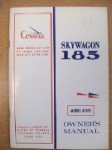7.
TCDS.
Consistent with 14 CFR, a TCDS is part of a product’s type
certificate (TC). A TCDS is a summary of the product’s type design. It is used primarily by authorized persons
during initial or recurrent issuance of a Standard Airworthiness Certificate. It is neither a
regulation, a maintenance requirements document,
or a flight manual document. As such, for aircraft holding a valid and current airworthiness certificate, a TCDS
should not be used as a sole source to determine what maintenance is required or what the flight operations requirements are.
Any language on a TCDS, by itself, is not regulatory and is simply not enforceable. There must be a corresponding rule to make any language on the TCDS mandatory. For example, there is a mention of “operating limitations” on most
TCDS. The corresponding rule for “operating limitations” is 14 CFR § 91.9(a) which states, “Except as provided in paragraph (d) of this section, no person may operate a civil aircraft without complying with the operating limitations
specified in the approved Airplane or Rotorcraft Flight Manual, markings, and placards, or asotherwise prescribed by the certificating authority of the country of registry.” Without § 91.9, the TCDS requirement to comply with operating limitations would not be enforceable.

